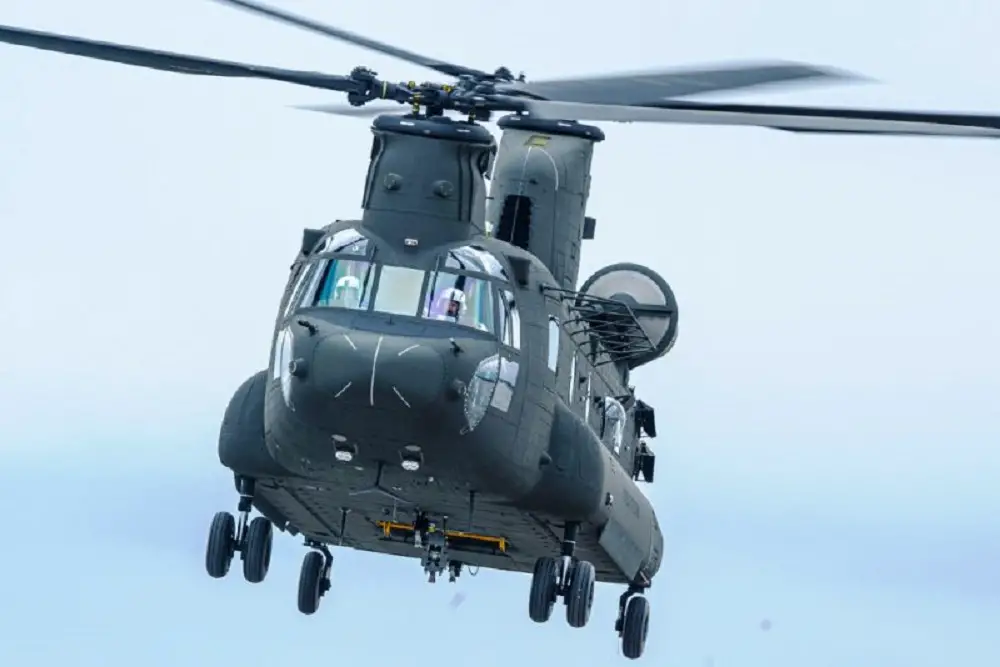In support of ongoing U.S. Army modernization efforts, Boeing [NYSE: BA] delivered the first CH-47F Block II Chinook. The aircraft is one of up to 465 in the Army’s fleet that will be modernized to the new Block II configuration. With an improved drivetrain, a reinforced airframe and enhanced fuel system, the CH-47F Block II provides for an additional 4,000 pounds of max gross weight and extends the mission radius for nearly all payloads. In addition to the capability improvements, the aircraft’s design enables future technology upgrades. Additionally, the company’s Block II program improves aircraft sustainment. The improved reliability of the new rotor system minimizes unscheduled maintenance, and the simplified fuel system drives sustainment efficiency reducing maintenance burden and cost.
“As the Army’s Heavy Lift platform of tomorrow, the CH-47F Block II provides increased capability while continuing support of the Army’s requirement to remain strategically responsive across the full spectrum of operations,” said Viva Kelly, U.S. Army Cargo Helicopters acting project manager.
“The CH-47F Block II provides capability improvements allowing the U.S. Army to lift more, fly farther and maintain their aircraft better than ever before. This modernization program enables the battle-tested Chinook to play a key role in multi-domain operations going forward,” said Heather McBryan, vice president and program manager, Cargo Programs.

The Boeing CH-47 Chinook is a tandem-rotor helicopter originally developed by American rotorcraft company Vertol and now manufactured by Boeing Defense, Space & Security. The Chinook possesses several means of loading various cargoes, including multiple doors across the fuselage, a wide loading ramp located at the rear of the fuselage and a total of three external ventral cargo hooks to carry underslung loads. Capable of a top speed of 170 knots (200 mph; 310 km/h), upon its introduction to service in 1962, the helicopter was considerably faster than contemporary 1960s utility helicopters and attack helicopters, and is still one of the fastest helicopters in the US inventory. It remains one of the few aircraft to be developed during the early 1960s – along with the fixed-wing Lockheed C-130 Hercules cargo aircraft – that has remained in both production and frontline service for over 60 years.
The latest mainstream generation is the CH-47F, which features several major upgrades to reduce maintenance, digitized flight controls, and is powered by two 4,733-horsepower (3,529 kW) Honeywell engines. The milled construction reduces vibration, as well as inspection and repair needs, and eliminates flexing points to increase service life. The CH-47F can fly at speeds of over 175 mph (282 km/h) with a payload of more than 21,000 lb (9,500 kg). A CH-47F Block 2 is being implemented as of 2020. The Block II aims for a payload of 22,000 lb (10,000 kg) with 4,000 ft (1,200 m) and 95 °F (35 °C) high and hot hover performance, eventually increased up to 6,000 ft (1,800 m), to carry the Joint Light Tactical Vehicle; maximum takeoff weight would be raised to 54,000 lb (24,500 kg). It has 20% more powerful Honeywell T55-715 engines along with an active parallel actuator system (APAS) to enhance the digital advanced flight-control system, providing an exact torque split between the rotors for greater efficiency.















